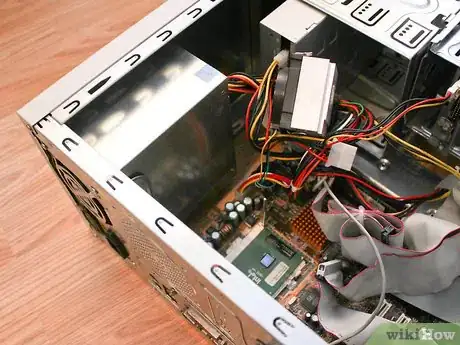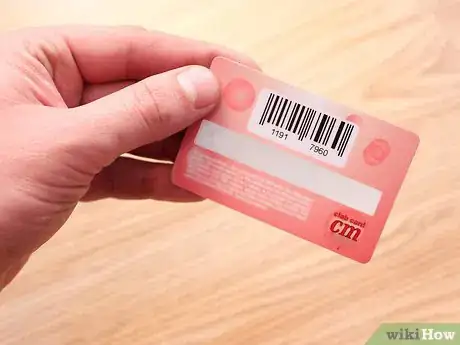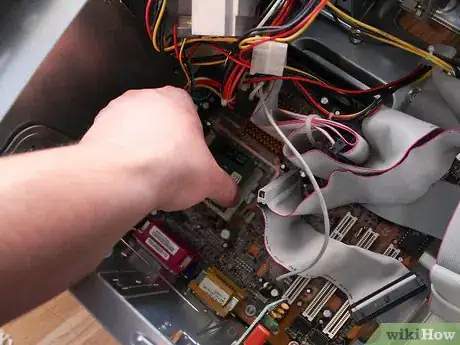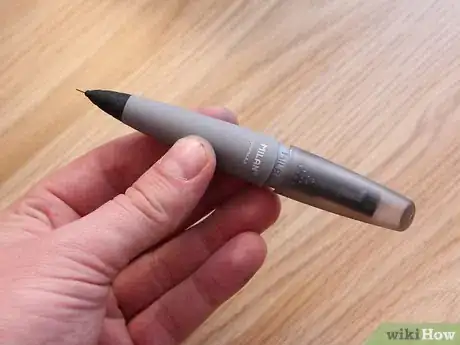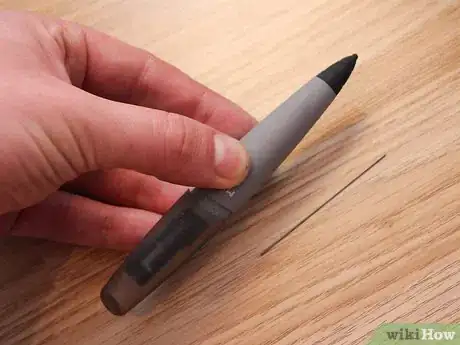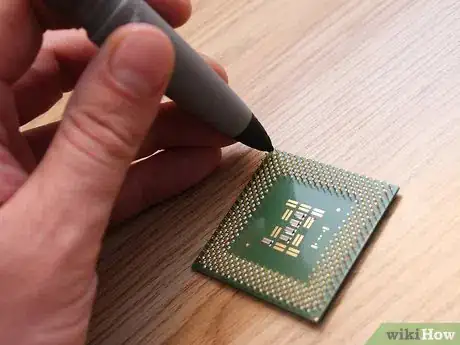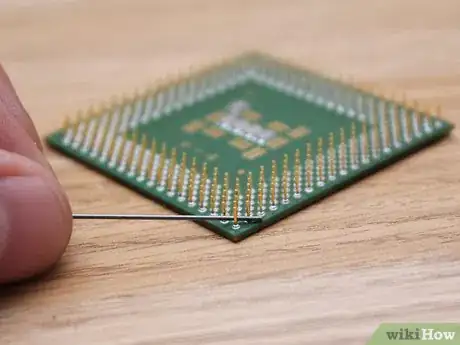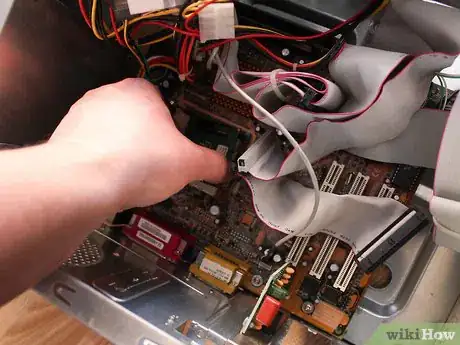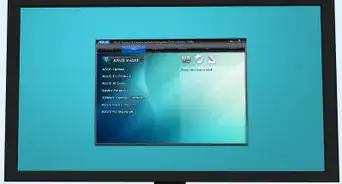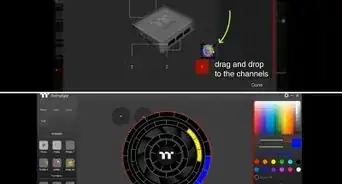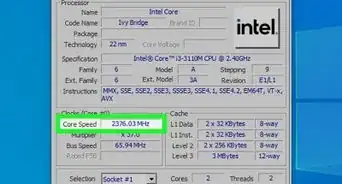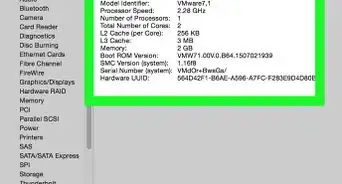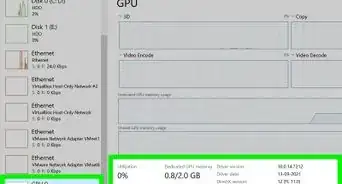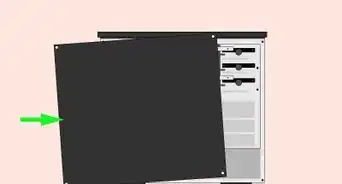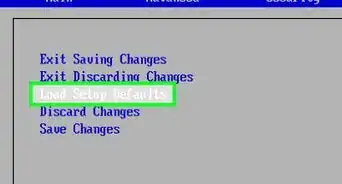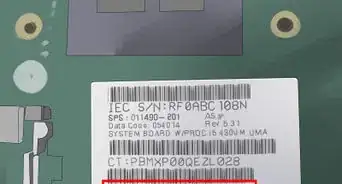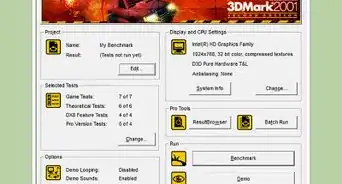This article was co-authored by Luigi Oppido. Luigi Oppido is the Owner and Operator of Pleasure Point Computers in Santa Cruz, California. Luigi has over 25 years of experience in general computer repair, data recovery, virus removal, and upgrades. He is also the host of the Computer Man Show! broadcasted on KSQD covering central California for over two years.
wikiHow marks an article as reader-approved once it receives enough positive feedback. In this case, several readers have written to tell us that this article was helpful to them, earning it our reader-approved status.
This article has been viewed 582,989 times.
A CPU is both a critical and fragile piece of hardware. A drop to the floor or a failed attempt at mounting can easily result in bent pins. Bent pins will prevent the CPU from seating normally and likely cause hardware errors in your computer. Luckily, there are some easy household remedies you can try before dropping money on a new unit.
Choose a Method
- Credit card: Good general approach.
- Mechanical pencil: Best when there are only a few bent pins.
- Sewing needle: Necessary for severely bent pins.
Steps
Using a Credit Card to Straighten Pins
-
1Find a proper workspace. You want to place the CPU on a hard, flat surface with the pins facing straight into the air. Be sure you have discharged any static electricity by touching a grounded metal object.
-
2Find the right card for the job. Typically a standard plastic credit card or gift card will do. Find a row on your CPU that has no bent pins in it. Take one of your cards, stand it on edge and gently run it through the row of pins. If the card is the right thickness it should slide between the pins with slight resistance and no bending of the pins.
- If there is no contact with the pins or no resistance, then the card is too thin.
- If the card is too thick you will not be able to slide the card through the pins without bowing out or bending pins. Err on the side of caution and never force the card through.
Advertisement -
3Run the card through the rows with bent pins in all 4 directions. For example, if there is one bent pin, run the card in the rows surrounding it, much like the “#” symbol. This will bend the pin straight in each direction.
-
4Attempt to mount the CPU. If it doesn't slide right in the socket, it is possible that there is still a bent pin. Sometimes pins in the middle can be difficult to detect.
- Important: do not attempt to shove or jam the CPU in.
Realigning Pins with a Mechanical Pencil
-
1Find a properly-sized pencil. This method is best used when there are a few individual bent pins. You will want a mechanical pencil with a .5 or .7 millimeter opening. These sizes should fit comfortably around a CPU pin.
-
2Remove any pencil lead from the pencil. You need the opening to be free of obstructions.
-
3Place the empty tip of the pencil over the pin. Carefully maneuver the tip to bend the pin back into place. You can use the angle of the pencil as a guide to track how straight the pin is.
Using a Sewing Needle
-
1Get a properly sized needle. If the needle does not fit between two pins comfortably then it is too large. The advantage of a needle is its thin size, which allows you to unbend pins that other tools cannot get under.
- A toothpick or small tweezers are similar options that can work.
-
2Slide the needle underneath the bent pin. Take care not to scratch the surface of the CPU.
-
3Pull the needle up at one end. This will leverage the bent pin back to a straighter position.
-
4Assess the situation for how to move forward. If the pin seems reasonably straight, you can attempt to remount the CPU. If the pin still needs straightening, try the credit card or mechanical pencil now that you can get underneath it. You can also continue to manipulate the pins with needle to try to get them straighter.
- Always be careful when re-bending the pins a lot, as there is the risk of breakage
Expert Q&A
-
QuestionHow can I tell if I've actually straightened the pin?
 Luigi OppidoLuigi Oppido is the Owner and Operator of Pleasure Point Computers in Santa Cruz, California. Luigi has over 25 years of experience in general computer repair, data recovery, virus removal, and upgrades. He is also the host of the Computer Man Show! broadcasted on KSQD covering central California for over two years.
Luigi OppidoLuigi Oppido is the Owner and Operator of Pleasure Point Computers in Santa Cruz, California. Luigi has over 25 years of experience in general computer repair, data recovery, virus removal, and upgrades. He is also the host of the Computer Man Show! broadcasted on KSQD covering central California for over two years.
Computer & Tech Specialist It's very difficult to to do it with the naked eye. I've personally never been able to figure out if I've actually done it correctly without a magnifying glass. You've really got to have a careful eye and a steady hand to pull this off.
It's very difficult to to do it with the naked eye. I've personally never been able to figure out if I've actually done it correctly without a magnifying glass. You've really got to have a careful eye and a steady hand to pull this off. -
QuestionCan I just use regular tweezers for this?
 Luigi OppidoLuigi Oppido is the Owner and Operator of Pleasure Point Computers in Santa Cruz, California. Luigi has over 25 years of experience in general computer repair, data recovery, virus removal, and upgrades. He is also the host of the Computer Man Show! broadcasted on KSQD covering central California for over two years.
Luigi OppidoLuigi Oppido is the Owner and Operator of Pleasure Point Computers in Santa Cruz, California. Luigi has over 25 years of experience in general computer repair, data recovery, virus removal, and upgrades. He is also the host of the Computer Man Show! broadcasted on KSQD covering central California for over two years.
Computer & Tech Specialist No, you need to use electrical tweezers with nonstatic protection. They've also got to be exceptionally small. It's just really hard to do it with standard tweezers.
No, you need to use electrical tweezers with nonstatic protection. They've also got to be exceptionally small. It's just really hard to do it with standard tweezers. -
QuestionWhy do CPU pins bend so easily?
 Luigi OppidoLuigi Oppido is the Owner and Operator of Pleasure Point Computers in Santa Cruz, California. Luigi has over 25 years of experience in general computer repair, data recovery, virus removal, and upgrades. He is also the host of the Computer Man Show! broadcasted on KSQD covering central California for over two years.
Luigi OppidoLuigi Oppido is the Owner and Operator of Pleasure Point Computers in Santa Cruz, California. Luigi has over 25 years of experience in general computer repair, data recovery, virus removal, and upgrades. He is also the host of the Computer Man Show! broadcasted on KSQD covering central California for over two years.
Computer & Tech Specialist The metal they use to produce CPUs is just super flexible. Touching the pins the wrong way can bend them really easily.
The metal they use to produce CPUs is just super flexible. Touching the pins the wrong way can bend them really easily.
Warnings
- Having improperly installed or handled the CPU (unless it arrived with bent pins) will void your warranty on the CPU.⧼thumbs_response⧽
- In most modern processors, the CPU pins are made from very thin wire plated with gold, and as such, are very soft, pliable, and break very easily. There is no way to replace broken pins on a CPU, unless you have special equipment and skill.⧼thumbs_response⧽
- Do not forget to apply the thermal goo on top of the CPU if you had to take the heat-sink off.⧼thumbs_response⧽
- Do not bend the pins too much. They do not have to be perfect; as long as they are mostly aligned the action of closing the CPU socket will push them straight. However, repeated back and forth bending can cause pins to break off.⧼thumbs_response⧽
Things You'll Need
- A CPU
- A gift card, credit card, or ID (the plastic card that comes with some thermal paste should be the right thickness)
- A 0.5mm or .07mm mechanical pencil
- A sewing needle of appropriate diameter
- A magnifying glass will help you to periodically assess your progress. Some free-standing models or a loop may allow you to perform the entire task with its aid
About This Article
1. Find a credit or gift card.
2. Place the CPU on a flat surface.
3. Run the card through the rows with bent pins.
